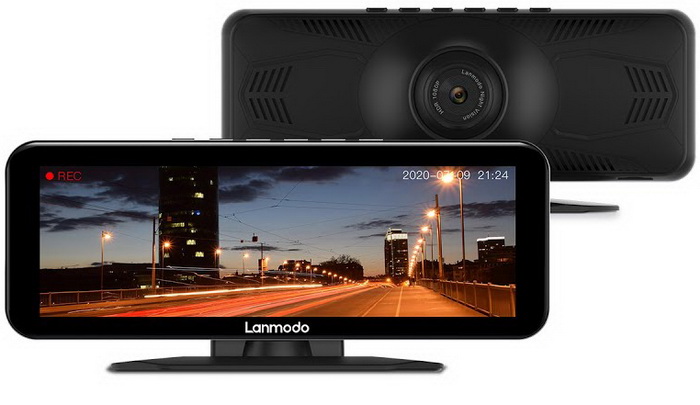INTRODUCTION

Car dash cameras have been around for well over a decade now (police has been using them since 1981 - not including the very old case in the 1930's) but it wasn't until 2015 that their sales skyrocketed, not only in the EU but all over the world. Not much has changed in dash cameras since then however, yes image/video and audio quality has improved and there are extra features like cloud recording, 5G WiFi connectivity and more accurate GPS antennas but that's just about it. Back in 2019 Lanmodo officially released their popular Vast (review here) a device which was basically an improved (1080p Full Color) version of the night vision systems featured in luxury cars. Still, it lacked the rather crucial recording capability something that Lanmodo planned to include with the Vast Pro model aimed for release in 2020 and yes this is finally what today's review is all about.
Lanmodo, since founded in 2015, have attracted people's attention because of its ingenious products. In 2017, Lanmodo launched the world's first all-in-one automatic car tent that can not only provide four-season protection, but can also be used as outdoor umbrella and camping tent. In 2018, Lanmodo released 1080P full-color night vision system which helps keep driving safe.
The new Lanmodo Vast Pro is actually quite similar to its predecessor since once again inside the large enclosure we find a large 8-inch IPS LCD screen and a SONY MCCD photosensitive sensor (minimum illumination of 0.0001 Lux- again probably one of their starlight models - up to 300 meters distance) with 7-layer full glass optical lens (45 degrees viewing angle this time over - the Vast had 36 degrees) and 1080p recording. Aside the standalone Vas pro there's also a version which includes a compact IP67 certified (waterproof) rear camera that can record at 1080p resolution (compared to the HD of the normal Vast) with a viewing angle of 170 degrees and a night vision distance of up to 20 meters (regular sensor). So basically, the new Lanmodo Vast Pro adds recording capabilities and a slightly wider angle to its predecessor but are these enough? Let's find out.

 O-Sense
O-Sense







.png)

